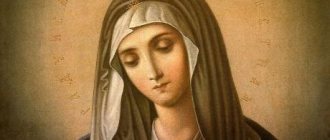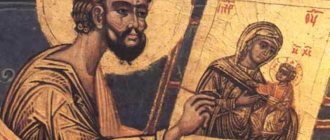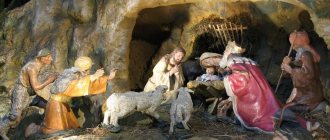The word “diptych” comes from two ancient Greek δύο - “two” + πτῠχή - “tablet, tablet”. In ancient Greece and Rome they were used to record various information. A diptych is two wooden, metal or bone tablets connected to each other. Records were made in the inner folds, while the outer part could be decorated in various ways. In addition to them, there were such “notebooks” with three or more tablets and were called triptychs (with three), tetraptychs (four), pentaptychs (five), and such tablets as a whole had the name polyptych from the word πολύ-πτῠχος - “multi-table”, or consisting of many tablets.
Consular folding
You may be interested in: Marcus Fabius Quintilian: biography, scientific activities, statements
In Byzantium, such tablets were given to consuls after entering the service. The oldest known consular diptych was made in 406, with the last one found dating from 541. They were large in size. On the inside there was a list of consuls, and on the outside (cover) the customer of the diptych itself was depicted. Partially, the consular tablets were used as boards for the altar Gospel and other church books.
Meaning of the word diptych
(δίπτυχον) - two wooden, bone or metal oblong planks, connected to one another with a cord, braid or hinge and folded together, like a book binding. On the outside they had a smooth surface or were decorated with carved work, and on the inside, also representing a smooth field, surrounded by a convex strip along the edge, they were covered with a layer of wax on which they could write, or rather, scratch, using a sharpened steel stick (style) . D. played the role of notebooks and memorial books among the ancient Romans and Greeks. Sometimes the tablets, on one of their narrow edges, were equipped with small handles to make it more convenient to hold them in your hand when writing. The term “diptych” appeared only in the time of Constantine the Great: before that, similar writing tablets were called tabulae, pugillares, codices and codicilli by the Romans, and by the Greeks - πίνακες θ δέλτοι. In those cases when the notebook contained, in addition to the two external doors, another one, two or more tablets inside, it was called a triptych, tetraptych, etc. A special category is made up of the so-called “consular documents.” They differed from the usual ones in their larger size (sometimes reaching 1¼ feet in height) and were always made of ivory. These were expensive works of art that the newly elected consul gave to senators, provincial prefects and other important persons who cast their votes for him. The outer sides of the consular documents were decorated with inscriptions, emblems and artistically executed images of the consul himself, seated on a curule chair, in luxurious attire, and holding a scepter in one hand, with a bust of the emperor at the upper end, and in the other - a circus mappa (mappa circensis), - a bundle of cloth with which the consul gave the signal for the start of the games. Under the figure of the consul, marked with his name, circus performances, gladiator fights, etc. were often depicted. On the inner surfaces of the doors there was a list of consuls, starting with L. Junius-Brutus and ending with the one by whose order the D. Consular D. was made. came into use in the West and East, apparently, no earlier than the 3rd century. according to R.H.; the oldest of them dates back to 248, the latest - to 541. The documents of 21 consuls, in 30 copies, have survived to this day. Of these, five, coming from the Bazilevsky collection, are in Imp. Hermitage (in the Department of the Middle Ages and the Renaissance). When Christianity triumphed over paganism in the Roman Empire, the new religion adapted consular and other documents for its use. Some of them began to serve as binding boards for the gospels and sacred books in general, and they were decorated with rich gold frames, decorated with precious stones and enamel. Most of the most ancient D. came to us precisely through their use in the Christian Church. Other copies took place on altars, in the form of decoration and, at the same time, in the meaning of tables, according to which the celebrant could read liturgical prayers or commemorate the living and the dead. From the end of the 4th century. D. appeared, made specifically for church purposes, depicting no longer worldly subjects, but Gospel and Old Testament events, the faces of Christ, the Mother of God, the apostles, etc. Since the names of all those who showed zeal and devotion to religion were included in the memorial lists - kings, patriarchs, bishops, martyrs, confessors, benefactors, etc. - then such synodics were made, over time, too long to fit on one D. Therefore, D. of three kinds were introduced: 1) episcopal D. (diptycha episcoporum), for the commemoration of local bishops; 2) D. living (d. vivorum), in cat. the names of living sovereigns, spiritual dignitaries, donors for the benefit of the church and in general all its worthy children were entered, and 3) D. mortuorum, designated to record deceased champions of religion and pious people. Recording someone's name in D. was considered an honor for that person; on the contrary, to be refused such an entry or to be erased from the D. was a shame, in some way excommunication. In the Middle Ages, the use of D. in churches became universal; they began to be found among private people, and, however, their nature and purpose gradually changed. Sacred images began to be placed on the inner sides of the boards, while the outer sides were left smooth. These were no longer notepads or book covers, but folding images in front of which pious people prayed in their homes, and which the crusader, pilgrim and the poorest wanderer took from along the way, as objects of religious worship. Monuments of this kind especially multiply from the 9th century, after the era of iconoclasm. It can be assumed that it was precisely the persecution of sacred images that contributed to the spread of such small, easily movable and hidden images. Along with images made of ivory, triptychs—three-leaf folding panels—made from the same material, as well as folding images carved from wood, cast from copper, made from precious metals, and decorated with enamel, came into widespread use. In the 14th century, due to the rarity and high cost of ivory, wooden folding panels prevailed, sometimes taking on significant dimensions and, in this case, serving as altar icons in churches and chapels; however, bone and metal D. continued to be in use until the 16th century. and even later.
Wed. Fr. Gori, “Thesaurus veterum diptychorum consularium et ecclesiasticorum” (1759); “Catalogue of the Fejervari ivories in the Museum of F. Mayer” (Liverp., 1856), F. Westwood, “A descriptive catalog of the fictile ivories in the South-Kensington Museum” (L., 1876); F. Labarte, “Histoire des arts industriels” (vol. I); “Dictionnaire des antiquités grecques et romaines, publ. par Saglio" (vol. V, article by G. Bloch: "Diptychon") .
A. N.E.
Orthodoxy
In the church environment, a diptych is a list of autocephalous Orthodox churches, as well as their sequence of commemoration during services. On this basis, places are allocated during the concelebration of heads and representatives of Churches, during presence at Orthodox forums, councils and other general events. Diptych is the basis of church etiquette.
Thanks to religion, consular folds were also preserved, since they were kept by churches and decorated with enamel, gold and precious stones. Subsequently, diptychs began to depict Jesus Christ, the Mother of God, the apostles and illustrations of events in sacred history. In the Ancient Church, double tablets of various types were created, among which were:
- Martyrologies are lists of martyrs and saints.
- Baptismal diptychs - with the names of newly baptized persons.
- Lists of living Christians are usually the names of the local bishop and bishops, clergy and other members of the church community.
- Lists of deceased Christians, which included the names of deceased bishops, deacons, presbyters and clergy of the local community.
- Episcopal lists with the names of bishops, living or deceased.
Achilles
Views: 6,268
The telegram channel “Father Luther” publishes a translation of the official communiqué of the Alexandria Church on the recognition of the OCU:
“I [Patriarch Theodore II of Alexandria - approx. ed.] I would like to report from the temple in Daher, from Cairo, the capital of Egypt, about a great event for our church. I officially declare that the ancient Patriarchate of Alexandria, the second in the rank [of local churches], after long prayer and after much reflection, in the presence of the holy bishops, in the presence of His Excellency the Ambassador of Greece, from today included in the diptychs the Orthodox Autocephalous Church of Ukraine and its Beatitude Primate Mr. Epiphany.
I have served the Church for so many years and I know that from today, by the grace of God, the solution to this big issue for our church will begin. Harmony, love and hope will arise between us. Through our efforts, through our attempts, we will see Christ tell us that he is in our midst.
In the past months, we have been convinced of the disposition of our brothers, the sacred hierarchs, to recognize the autocephaly of the Ukrainian Church, granted by the synodal tomos, signed by the All-Holy Ecumenical Patriarch.
As everyone knows very well, our holy ecumenical Orthodox Church operates in accordance with the conciliar system of government, as it received it from the holy ecumenical councils. According to this system, the chairmen of local church synods are a resultant force (συνισταμένη) with their members.
In accordance with this, we, as a power equivalent (συνισταμένη) and fulfilling the intention of the holy brother hierarchs, commemorated in the diptychs of the universal Orthodox Church the Primate of the Autocephalous Church of Kiev and all Ukraine - His Beatitude Metropolitan Epiphanius, fervently praying for the peace and prosperity of our Orthodox churches.”
The Russian Orthodox Church has already responded to this statement, acting Press Secretary of Patriarch Kirill Vladimir Legoyda wrote in his Telegram channel:
“Very sad news has come from Alexandria about the decision of the Patriarch of Alexandria Theodore to recognize the head of the Ukrainian schismatics Sergei Dumenko (“Metropolitan Epiphanius”) and to include his name in the diptychs of the Alexandrian Church. This makes it impossible for the Patriarch of Alexandria to be commemorated by the Patriarch of Moscow and All Rus'.”
The rector of Sretensky Seminary, Archbishop Ambrose (Ermakov), in his telegram channel expressed regret about the betrayal of the Patriarch of Alexandria:
“In the spring of this year, together with monks and students of the Moscow Theological Academy, I visited Egypt as a pilgrim. One day I prayed in Alexandria with Patriarch Theodore. He received me warmly and during the conversation he lamented what was happening in the Orthodox world, assured me that he supported His Beatitude Metropolitan Onuphry of Kyiv and All Ukraine and was praying for him.
Very little time passed, and everything suddenly changed. Today, Patriarch Theodore for the first time remembered Sergei Dumenko (the leader of the schismatic group in Ukraine, “Metropolitan Epiphanius”) and included him in the diptych of his Church.
There's nothing new under the sun.
You will also be betrayed ... by brothers, and relatives, and friends, but the time will come and your sorrow will be turned into joy (John 16:20).
And don't be afraid of what's happening.
This is how it was before, this is how it is now, and this is how it will be after us. Our business is to be with Christ and His Church.”
If you like our work, support us:
Sberbank card : 4276 1600 2495 4340 (Pluzhnikov Alexey Yurievich)
Or using this form, entering any amount:
Modern times
Currently, a diptych is a composition of two photographs, consisting of different or two parts of one image. This creates the opportunity to express meaning and emotions. Two complementary images telling the same story, but from different angles.
There are not very many photographers engaged in this way of self-expression, but among them there are interesting works.
You can learn how to create a diptych yourself using two photographs taken at different times. At the same time, such a photograph has its own story, which can be expressed without words.
There are also artists who paint diptychs, which are essentially two paintings next to each other.
Artists exhibit their paintings in galleries next to each other; when selling paintings, it is recommended not to change places, so as not to distort the author’s intention. This is what a diptych means in modern times.
Source
DIPTYCH
"Martin van Nieuwenhove's diptych." Artist H. Memling. 1487. Memling Museum (Bruges).
DIPTYCH (Greek δίπτυχον - folded in half, double-leaf), two plates connected to each other for records or images. In Ancient Greece (δέλ- τοι, πίναϰες) and Rome (tabellae, pugillares, codices, codicilli, libelli) - tablets for recording, which were two plates fastened with braid, cord or hinge (most often wooden or bone; internal ones were intended for recording). waxed sides). Widespread use of the term “D.” dates back to the 4th century. Such “books” could contain additional “sheets”, and then, depending on their number, they were called triptychs (τρίπτυχα), tetraptychs (τετράπτυχα), pentaptychs (πεντάπτυχα) or polyptychs (πολύπτυχα ). In the ancient Church, D. is a list of names commemorated during the liturgy (proclaimed from the pulpit during the Eucharist). So, for example, the practice of compiling memorial lists of those who accepted martyrdom for the faith, which apparently existed since apostolic times, is mentioned by Cyprian of Carthage, Cyril of Jerusalem, Gregory of Nyssa, Ambrose of Milan. D. served as a visible embodiment of the unity of the Church, the unification in it of all the fullness of the faithful; exclusion from D. actually meant a falling away from communion with the Church. The later expansion of D. determined their specification. The D. of the living (δίπτυχα ζώντων) and the D. of the deceased (δίπτυχα νεϰρῶν) are drawn up. The first included the names of the newly baptized, as well as the names of popes and patriarchs, bishops and priests, ktitors, and noble persons from the laity (the episcopal deeds themselves were formalized quite quickly). In the D. of the living, the Mother of God, martyrs and confessors were also remembered, appearing before God for the completeness of the faithful. The names of persons who were in the D. of the living, after their death, were included in the D. of the deceased, which testified to the continuity of their communication with the Church. D. with the names of deceased and living Christians subsequently began to be called synodics, in which in most cases the names of Christians are entered for temporary commemoration, for example. within 40 days or 1 year. In relation to the deceased, there is also the so-called. eternal remembrance, the duration of which is limited only by extreme events (for example, the cessation of the existence of a parish or monastic community, as was the case during the persecution in the 20th century in the Russian Church). Dr. modern view D. are private memorials, which are conducted by pious families and are served along with prosphora for commemoration at the Divine Liturgy of living and deceased relatives, friends, and other Orthodox Christians. Nowadays, in Orthodox worship, the ancient custom of reading D. corresponds to the commemoration of the living and the dead at the proskomedia (see Liturgy), at the litanies after the reading of the Gospel, and in conclusion. parts of anaphora. In Catholic In divine services, commemoration of the living and the dead is performed during the Eucharistic. prayers.
The term "D." is also used in relation to the list of primates of autocephalous Orthodox Churches and, accordingly, to the list of these Churches themselves.
D. began to take artistic form in the era of late antiquity. From ser. 3rd century to Rome empire, consular documents made of ivory became widespread. On the outside, the consul was represented seated on a curule chair, with a scepter in one hand and a circus mappa (a roll of cloth used to signal the start of games) in the other; At the top there was a bust of the emperor, and under the portrait of the consul there were scenes of circus games, horse races, and gladiator fights. On internal On the surfaces of the D. there was a list of consuls, starting from the first - Lucius Junius Brutus, ending with the one who was depicted on the outside. From the end 4th century In the likeness of consular doors, doors began to be created for church needs with images of Jesus Christ, the Mother of God, the apostles and scenes from Sacred History on the outer doors. In Byzantium, during the period of iconoclasm, folding houses in the form of D. appeared, in which icons were located not on the outside, but on the inside. sides, so that it was convenient to hide them from their persecutors. After the victory over iconoclasm, folding icons made of ivory, wood, gold, silver, copper, etc. were used during travel as prayer images. Picturesque and mosaic icons-D. became widespread in Byzantium from the 11th century. D. made of ivory returned to the west. claim in con. 13th–14th centuries The center of their production was Paris, where Gothic. stylistics were created with multi-figure narratives. scenes. In Byzantium and in the West. Jewelry jewelry decorated with enamels and precious stones was created in Europe. Byzantine. influenced by the type of picturesque painting in the end. 13th century penetrates Europe and becomes one of the most widespread types of paintings; its sizes range from miniature portable folding boxes to monumental altars. Painting painting reached its highest flowering in Italy and Germany in the 14th century, and in the Netherlands in the 15th century. In the 16th century the painting form is gradually falling out of use, and in modern art painting is called a composition of two separate but complementary paintings.
Notes
Comments
- Recognized by the Orthodox Churches of Constantinople, Alexandria, Greece and Cyprus
- Autocephalous status is recognized by the Russian, Georgian, Bulgarian, Polish Orthodox Churches and the Orthodox Church of the Czech Lands and Slovakia, the rest of the local Churches consider the OCA to be part of the Russian Orthodox Church
Sources
- ↑ 1 2
Statement of the Holy Synod of the Russian Orthodox Church in connection with the illegal invasion of the Patriarchate of Constantinople into the canonical territory of the Russian Orthodox Church // Official documents
(unspecified)
. Patriarchy.ru. Date accessed: October 16, 2021. - Priest Igor Yakimchuk
.
In what order should we be listed, and in what order should we stand - this is not the essence of the Orthodox faith!, Pravoslavie.Ru
. Retrieved August 4, 2021. - Is it possible to take a bath with a Jew? (undefined)
.
Radonezh.ru
. Date accessed: August 4, 2021. - Other Orthodox Churches // Ecumenical Patriarchate of Constantinople
- Shaburov N. V.
Orthodoxy // Applied religious studies for journalists / comp. and ed. M. V. Grigoryan. — M.: Center for Extreme Journalism; Human Rights, 2009. - pp. 92-94. — 254 p. — 1000 copies. — ISBN 978-5-7712-0407-9. - Hierarchical order of Orthodox Patriarchal Sees. History of the Diptych Website Borisov Deanery. First Borisov church district. Borisov diocese. Belarusian Orthodox Church
- Autocephalous churches Orthodox encyclopedia “ABC of Faith”
- Statement of the Holy Synod of the Russian Orthodox Church, 10/17/2019
- The Russian Orthodox Church, in connection with the recognition of the Orthodox Church of Ukraine by the Primate of the Greek Orthodox Church Jerome II, stopped Eucharistic communion with him, although it expressed the desire to maintain prayerful communication with those of the bishops of the Greek Church who will not recognize the canonicity of the OCU - Patriarch Kirill for the first time did not remember the head of the Greek Church at the liturgy // RIA Novosti, 03.11.2019
- The Russian Orthodox Church will stop commemorating the Patriarch of Alexandria because of his support for the OCU. Interfax, 8.11.2019
- The Russian Orthodox Church stopped prayerful and Eucharistic communion with Patriarch Theodore II of Alexandria, but maintained church communion with the bishops of the Alexandria Church, except for those who supported or will in the future support the OCU - Journals of the meeting of the Holy Synod of December 26, 2021. Magazine 151. Patriarchy.ru
- Patriarch Kirill will not commemorate Chrysostom II // Vesti, November 20, 2020










